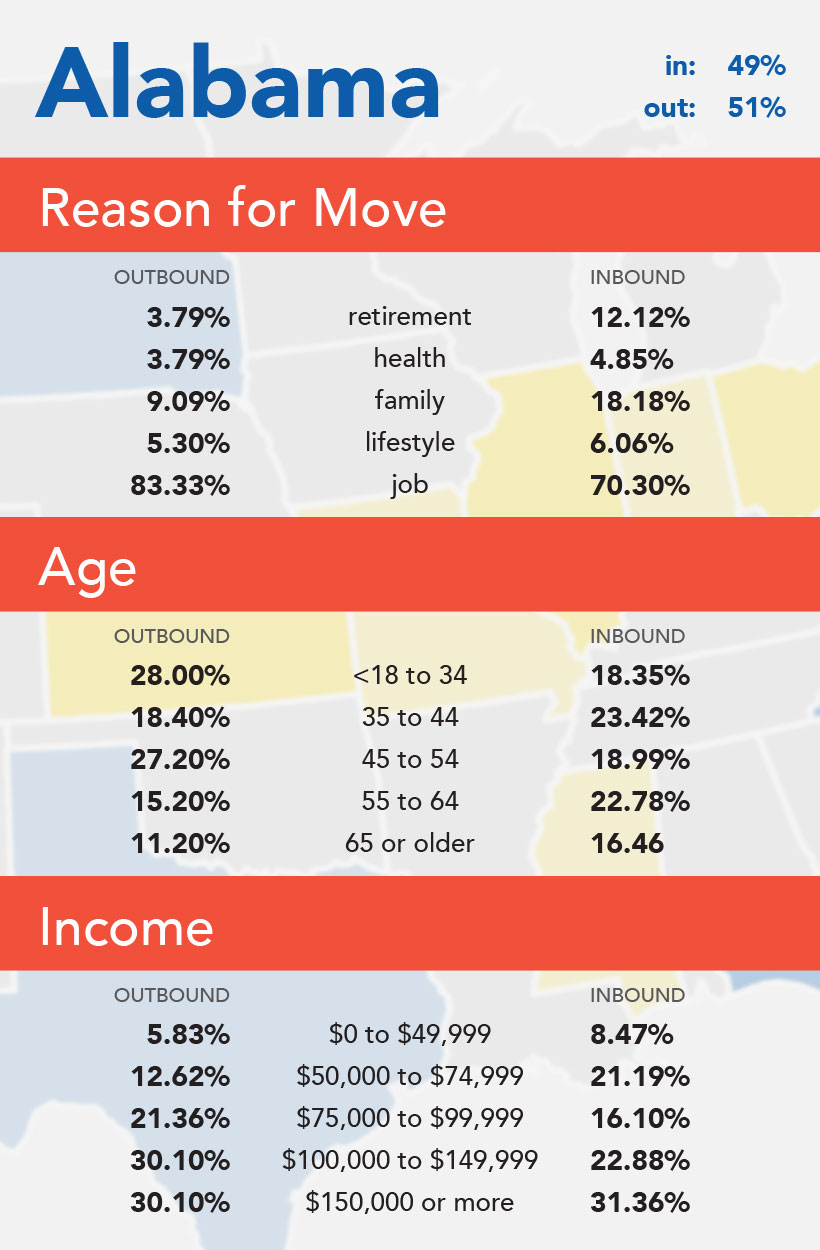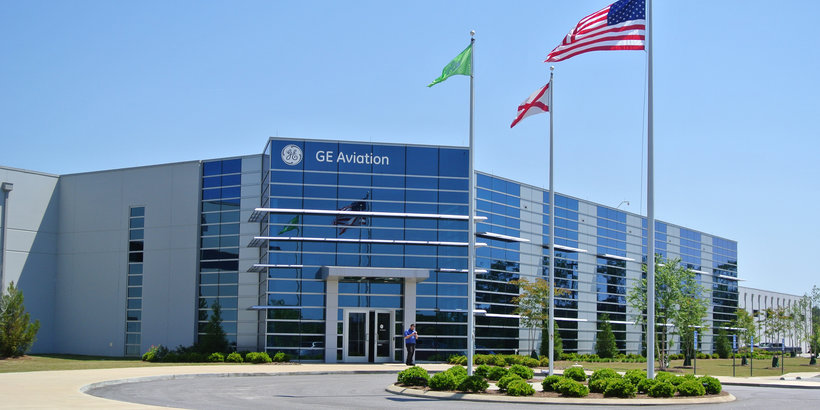
A new migration study by United Van Lines (UVL) found that, in 2015, slightly more people (51%) moved out of the state of Alabama than moved in (49%).
“For nearly 40 years, we’ve been tracking which states people are moving to and from, and we’ve also recently started surveying our customers to understand why they are making these moves across state lines,” explained Melissa Sullivan, UVL’s director of marketing communications. “Because of United Van Lines’ position as the nation’s largest household goods mover, our data is reflective of national migration trends.”
UVL calculated the percentage of migrants who moved in and out of all 50 states and Washington, D.C., over the last 12 months, and found the following:
Top inbound states of 2015:
Rank. State (Percentage inbound)
1. Oregon (69%)
2. South Carolina (62%)
3. Vermont (62%)
4. Idaho (61%)
5. North Carolina (59%)
6. Florida (59%)
7. Nevada (57%)
8. District of Columbia (57%)
9. Texas (57%)
10. Washington (56%)
…
22. Alabama (49%)
Top outbound states of 2015:
Rank. State (Percentage outbound)
1. New Jersey (67%)
2. New York (65%)
3. Illinois (63%)
4. Connecticut (63%)
5. Ohio (58%)
6. Kansas (57%)
7. Massachusetts (57%)
8. West Virginia (57%)
9. Mississippi (57%)
10. Maryland (56%)
The reasons people are flocking to certain states and abandoning others are numerous; some are simple, while others are a bit more complex.
“This year’s data reflects longer-term trends of people moving to the Pacific West, where cities such as Portland and Seattle are seeing the combination of a boom in the technology and creative marketing industry, as well as a growing ‘want’ for outdoor activity and green space,” said Michael Stoll, economist, professor and chair of the Department of Public Policy at UCLA. “The aging Boomer population is driving relocation from the Northeast and Midwest to the West and South, as more and more people retire to warmer regions.”
Alabama’s relatively low taxes, its status as a right-to-work state, and its pro-business regulatory climate, have attracted numerous large companies to the state in recent years — Airbus, Remington, Polaris and Google, just to name a few — and the state’s automotive and aerospace industries continue to boom.
And as the UCLA professor mentioned, Alabama’s warm climate and welcoming culture will continue to attract retirees.
But a deeper look at the demographic breakdown of people moving in and out of the state reveals that Alabama appears to be hemorrhaging young people.

Alabama seems to be suffering from a problem sometimes referred to as “brain drain.”
A study published by Forbes Magazine placed Alabama in the lowest third of states when it comes to its ability to retain recent college grads.
In short, the majority of students who graduate from an Alabama college or university will move to another state to take their first job. Meanwhile, states like Washington, Texas, Florida, North Carolina and Nevada, all of which are on the list of top inbound states, retain the vast majority of their recent college grads.
As one might expect, college graduates tend to migrate toward places where they can find a job in their career field, and also to places where there are a high percentage of college graduates already living.
Some regions of Alabama, like many areas of the midwestern United States, have struggled to reinvent themselves economically as manufacturing has dwindled.
Alabama largest city, Birmingham, is home to a world-class research institution in UAB, and many other innovative companies and non-profits, but the city’s population as a whole lags behind when it comes to educational attainment.
The Brookings Metropolitan Policy Program in 2010 ranked American cities by which had the most college-educated residents. Out of the 100 largest metro areas in the country, Birmingham-Hoover ranked a disappointing 74th, with just 26.6% of residents having earned a college diploma. Most of the top ten cities were over 40%.
Huntsville, on the other hand, has one of the most educated workforces in the country.
According to a recent analysis, north Alabama is the single best place in the country to move, if you are an engineer. Huntsville tops the list, thanks in large part to the NASA flight center and Army arsenal, as well as a large private defense industry. Decatur comes in eighth on the list, thanks to a massive United Launch Alliance manufacturing facility.
It is no wonder, then, that many of the high-profile economic development projects Alabama has attracted in recent years — with Airbus being a notable exception — have chosen to locate in northern part of the state.
Alabama has smartly begun to take steps to reduce the brain drain.
For one, state leaders have taken proactive steps to reduce the stigma attached to the trades. The Go Build Alabama campaign was rolled out several years ago to educate young people on the value of learning a trade, dispel their misconceptions about the construction industry and inspire them to consider a career in the skilled trades. With more Alabama students learning a trade, they will be more likely to come out of school ready to take a job with any number of Alabama companies who are ready to hire them, rather than leaving the state to find employment elsewhere.
Additionally, the more success the state has in attracting tech companies like Google, and the friendlier the state’s economic climate is to entrepreneurs, the more young people will stick around after graduation.
These issues and more will be discussed at Yellowhammer’s upcoming Alabama Economic Growth Summit. For more information visit AlabamaJobsSummit.com.










